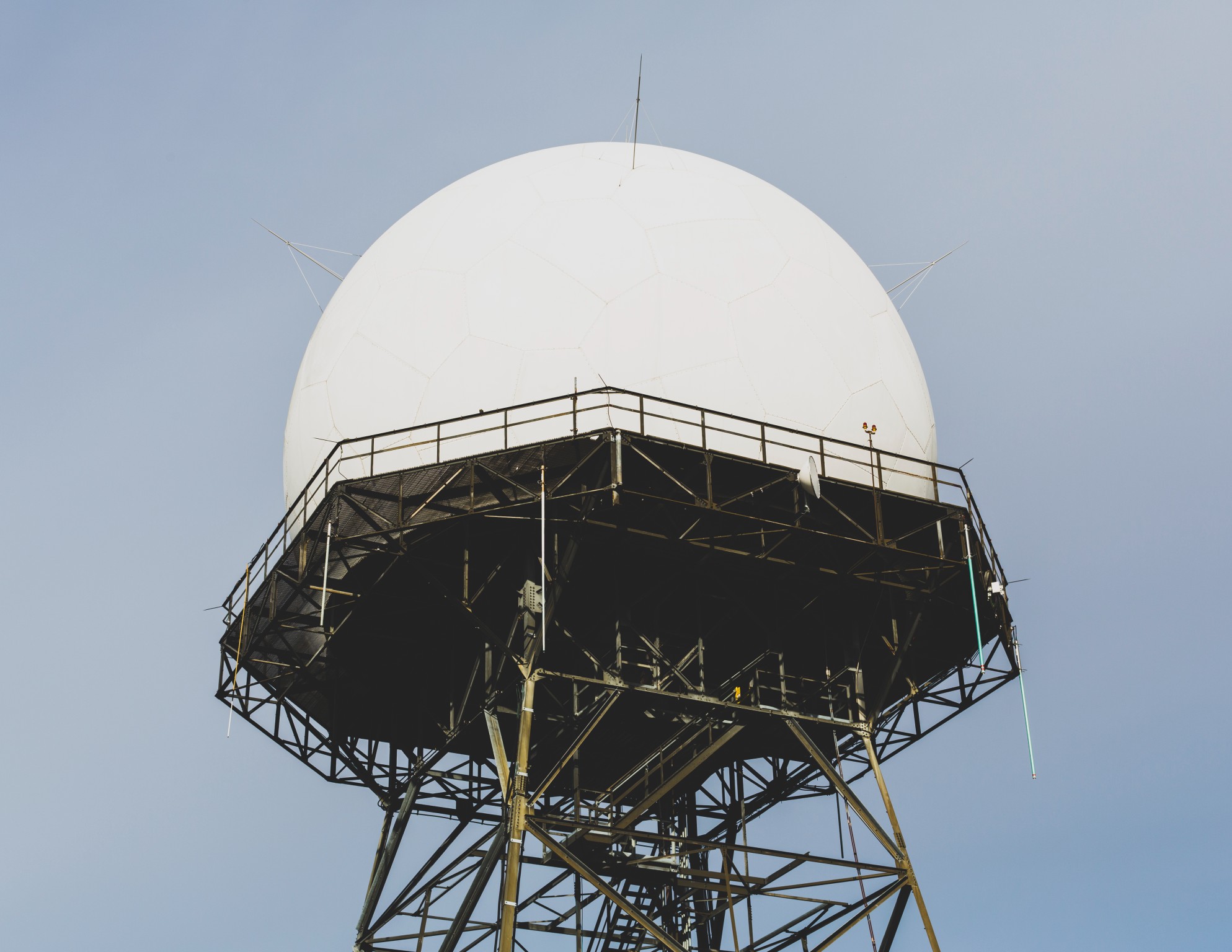Radar and Sensor Systems – The Eyes and Ears of Modern Defense

In modern warfare, the ability to detect, track, and respond to threats before they materialize is paramount. Radar and sensor systems play a vital role in providing military forces with the situational awareness needed to gain a tactical advantage. These systems serve as the "eyes and ears" of defense operations, allowing military commanders to monitor air, land, sea, and space domains, gather critical intelligence, and enhance decision-making.
Radar and sensor technologies have evolved significantly over the years, moving from basic detection systems to advanced, networked platforms capable of tracking multiple targets in real-time, even in complex environments. These technologies are foundational to military defense, from missile detection to battlefield surveillance and electronic warfare.
This blog explores the evolution of radar and sensor systems, their importance in modern military operations, the cutting-edge technologies driving these systems, and how AiDOOS is supporting the development of advanced radar and sensor platforms for defense contractors.
The history of radar systems dates back to World War II, where the ability to detect enemy aircraft early gave nations a significant strategic advantage. Early radar systems were limited to basic detection, often subject to interference and lacking precision. However, their introduction marked the beginning of a revolution in defense technology.
In the decades that followed, radar systems became more sophisticated, with improved range, resolution, and accuracy. By the Cold War era, radar had become integral to national defense systems, used in missile detection, air defense, and early warning systems. These systems provided real-time data on potential threats, allowing nations to respond quickly and with precision.
Fast-forward to the present day, and modern radar and sensor systems have become far more advanced, leveraging technologies such as digital signal processing, machine learning, and active electronically scanned arrays (AESAs) to enhance detection capabilities. Modern systems can track multiple targets simultaneously, differentiate between friend and foe, and operate in complex environments where traditional radar systems would be compromised.
In addition to radar, modern sensor systems encompass a wide array of technologies, including infrared (IR) sensors, acoustic sensors, laser detection systems, and synthetic aperture radar (SAR). These systems are often integrated into a networked architecture that provides a comprehensive view of the battlespace, allowing commanders to make informed decisions based on real-time data from multiple sources.
Today’s radar and sensor systems are powered by advanced technologies that allow them to detect, track, and respond to threats in real-time, even in the most challenging environments. Below are some of the key technologies driving modern radar and sensor systems:
Active Electronically Scanned Array (AESA) Radars: AESA technology is a significant advancement over traditional radar systems. Unlike mechanically steered radars, AESA radars use multiple small radar modules to emit radio waves. This allows for faster, more precise tracking of targets and reduces the system’s vulnerability to jamming and electronic countermeasures. AESA radars are widely used in fighter jets, warships, and ground-based air defense systems.
Digital Signal Processing (DSP): DSP enables radar systems to process large amounts of data quickly and accurately. By analyzing the signals received from radar and sensor arrays, DSP algorithms can filter out noise, identify threats, and improve target detection and tracking accuracy. DSP is critical for missile defense systems, where speed and accuracy are essential for intercepting incoming threats.
Synthetic Aperture Radar (SAR): SAR systems use radar technology to create high-resolution images of the Earth’s surface, even in poor weather conditions or at night. SAR is used in reconnaissance and surveillance missions, providing detailed imagery that can be used to monitor enemy activities, assess battlefield conditions, and plan military operations.
Infrared (IR) Sensors: IR sensors detect heat signatures, making them invaluable for detecting enemy aircraft, vehicles, and troops that might be camouflaged or operating in low-visibility environments. IR sensors are often used in combination with radar to provide a comprehensive view of the battlespace.
Passive Radar Systems: Unlike traditional radar, which emits radio waves, passive radar systems detect and analyze radio waves emitted by external sources (such as TV towers or cell phone signals) to detect objects. Passive radar systems are harder to detect and are useful in environments where stealth is a priority.
Lidar and Laser Sensors: Lidar (light detection and ranging) systems use lasers to measure distances and create high-resolution 3D maps of the terrain. Lidar is commonly used in autonomous systems, drones, and ground vehicles for navigation and target acquisition. Laser sensors are also used in laser rangefinders, providing precise distance measurements critical for targeting and artillery operations.
Multi-Sensor Fusion: The integration of data from multiple sensors—such as radar, infrared, and acoustic sensors—into a unified platform is known as sensor fusion. By combining data from different sources, sensor fusion enhances situational awareness, providing military commanders with a more accurate and comprehensive view of the battlefield.
Radar and sensor systems are essential to modern military operations, providing the real-time data and situational awareness needed to gain a tactical edge. These systems are used across all domains—air, land, sea, and space—and support a wide range of defense applications.
Air and Missile Defense: Radar systems play a crucial role in detecting and tracking incoming aircraft, missiles, and drones. Advanced radar systems, such as ballistic missile defense (BMD) radars, can detect missile launches from thousands of kilometers away, providing early warning and enabling interceptors to engage and neutralize the threat.
Battlefield Surveillance and Reconnaissance: Sensor systems are critical for providing continuous surveillance of the battlefield, allowing military forces to monitor enemy movements, identify potential threats, and plan operations. Systems like SAR and infrared sensors are used to gather intelligence in all weather conditions, day or night.
Electronic Warfare (EW): Radar and sensor systems are integral to electronic warfare, where they are used to detect and counter enemy radar systems, jamming devices, and communications. Modern EW platforms use electronic countermeasures (ECM) to disrupt enemy radar, while electronic counter-countermeasures (ECCM) protect friendly radar systems from being jammed.
Naval and Maritime Defense: Radar systems are used extensively in naval operations, providing sea-based situational awareness for detecting ships, submarines, and incoming missile threats. Naval radar systems are critical for ship defense, anti-aircraft operations, and navigation in congested or hostile waters.
Space Situational Awareness (SSA): In the space domain, radar and sensor systems provide critical intelligence on objects in space, including satellites, space debris, and potential threats. These systems enable military forces to track objects in orbit, monitor space traffic, and protect critical space assets from collisions or attacks.
While radar and sensor systems are highly advanced, they face several challenges in today’s complex and contested operational environments.
Electronic Countermeasures (ECM): As radar systems become more advanced, adversaries are developing increasingly sophisticated ECMs to jam or deceive radar signals. Radar systems must continuously evolve to counter these threats, incorporating anti-jamming technologies and stealth detection capabilities.
Stealth Technology: Modern aircraft and military platforms increasingly rely on stealth technology to reduce their radar signature and avoid detection. Radar systems must be capable of detecting low-observable targets, often requiring advanced radar waveforms and frequency-hopping technologies to overcome these challenges.
Cybersecurity Threats: As radar and sensor systems become more networked, they are vulnerable to cyberattacks that could disrupt operations or compromise data integrity. Ensuring the cybersecurity of radar networks is essential for protecting military operations from digital threats.
Miniaturization and Autonomous Platforms: The trend toward miniaturization of sensors allows for the deployment of radar and sensor systems on smaller platforms, such as unmanned aerial vehicles (UAVs) and autonomous ground vehicles. These systems can provide real-time intelligence in contested or hard-to-reach environments, enhancing battlefield awareness.
The development of cutting-edge radar and sensor systems requires expertise in signal processing, sensor integration, electronic warfare, and artificial intelligence. AiDOOS provides defense contractors with access to a global network of specialized talent, enabling them to accelerate the development of advanced radar and sensor technologies.
Whether it’s building AESA radar platforms, enhancing multi-sensor fusion capabilities, or developing AI-driven threat detection systems, AiDOOS connects defense organizations with the expertise they need to innovate in radar and sensor technologies. By leveraging AiDOOS, defense contractors can ensure that they stay ahead of emerging threats and deliver the next generation of radar and sensor systems that keep military forces safe and secure.
As technology continues to evolve, radar and sensor systems will become even more integral to modern military operations. The integration of AI, machine learning, and quantum radar promises to enhance the accuracy and efficiency of these systems, enabling faster decision-making and more precise threat detection.
At the same time, the development of hypersonic weapons and stealth technologies will pose new challenges for radar systems, requiring continuous innovation to ensure that military forces can detect and respond to emerging threats.
Radar and sensor systems are at the heart of modern defense, providing the real-time intelligence and situational awareness needed to gain a tactical advantage. From missile defense and battlefield surveillance to electronic warfare and space situational awareness, these systems enable military forces to detect, track, and respond to threats with precision.
By partnering with AiDOOS, defense contractors can accelerate the development of advanced radar and sensor platforms that keep military forces at the cutting edge of technology. As the threat landscape evolves, ensuring that radar and sensor systems can operate effectively in contested environments will be critical to maintaining military superiority.

For modern telecom enterprises, delivering exceptional QoS is no longer optional—it’s a brand differentiator and a strategic lever for growth. Static provisioning models won’t cut it in a world of hyper-dynamic data usage.